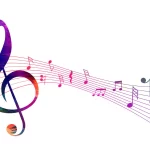The Importance of Sound and Music in Video Games
The significance of sound design and music in video games is hard to overestimate. The entire gaming journey can be improved or destroyed by poor sound. Sometimes, the player may not even be aware of the impact they get from the background sound and may have no idea why their experience is so poor or so superb.
In this post, we will discuss the role of sound design in video games, including the psychological underpinnings of sound design, the advantages of really high-quality sound design, and the prospects of sound design evolution.
What Is Sound Design and Why It Matters
It may not be that obvious at first sight, but in games, as well as in other types of entertainment, sound often plays a crucial role. They not only work as background but also accompany actions and dialogues, creating additional suspense and emotional experiences.
We have now already got used to that, but in fact, sound effects that mirror the actions of footsteps, gunfire, riding a horse, fighting with a sword, and so on, have to seamlessly blend with other elements of the game. Together with believable character dialogues, it is the sounds that breathe life into the virtual world. You may or may not pay attention to the visual style (unless it is ultimately ugly), but ugly sound is something that most people will not be able to tolerate. Even when playing online slots for real money at the best 1 dollar deposit casino people just can’t tolerate annoying sounds.
Sound is what adds heavily to the believability of the game, and the lack of it feels numb. It enriches and frames the atmosphere of the game and gives a deeper experience. This happens because sound has a deep impact on the human brain and with its help, it is possible to manipulate the experience and create a wide range of effects. Even if the visuals are humble, proper sound can make any game look and feel like a blockbuster.
Horror games are one great example where music is a key element creating the spine chills and the suspense. Players today are pretty much “trained”, so to speak, in terms of the visuals because of horror movies and the general trend of being used to different visual stimulation. It is easy to become desensitized visually. It is not the same with the sound, though.
Sound Design Function
Sound design in video games is not only about creating background music for ambiance and pleasant experiences. Sounds can play the role of a powerful tool for conveying important in-game information to the players. For example, in shooters, the gunfire sounds and their volume can instantly alert the player and inform them what is the distance to the danger, what kind of danger they are to expect, and what weapons to use.
It is due to the well-designed sound players can make decisions faster based on their instinctive understanding of the world within the game, compared to if they had no access to the background sound. They respond more effectively to the in-game challenges because they use more senses, just like if they did that in real life.
This is what we mean when we say immersive experience. It is not about the beautiful background sounds of the birds singing in the forest, although this is also important. The immersive experience is the one that serves as a compass for the players, giving them subtle cues that don’t need extra reading or rules. Getting used to the sound system in the game is pretty easy and helps navigate the virtual world more effectively.
In other words, sounds can serve as breadcrumbs of sorts, paving the way for the player toward their next goal or achievement. These functions are specifically valuable in fast-paced games where fast response is essential for a player’s success and entertainment.
Also, the rhythm of the music sets the dynamics of playing. It helps shape the tempo and serves as a guideline for the player to speed up or slow down. Changing the tempo of the game is important to keep the player’s perception fresh, and the background sound is one of the best signaling methods to help the player do that.
Moreover, depending on the player’s actions, the music may react and change (that is defined by the game), accompanying each move and thus making the experience even deeper emotionally.
All these functions that the sound design and music fulfill increase players’ engagement and make them come back for more.
The Benefits of High-Quality Sound Design
A decent sound design literally creates a bridge between the player and the game, bridging them emotionally and functionally. If the sound is good, the player forms even more positive associations with the game as with something entertaining and satisfying.
Some players like to even listen to their favorite game soundtracks outside the gaming world.
As it has already been mentioned, the impact of great sound on the player’s experience extends beyond just liking or disliking it. Music serves as a powerful tool for impacting the player’s brain, reactions, and therefore emotions. For example, music alone can change the player’s heart rate, breathing, level of energy, etc. So the emotions of fear, joy, and excitement are real in the game. A deep understanding of these psychological nuances helps sound designers and game publishers create truly immersive products and provide the ultimate satisfying experience.
The Future Prospects
All the cutting-edge technologies that emerge, together with more feedback from players and a deeper understanding of the music’s impact help publishers release products that are more and more stunning. Spatial 3D audio, for example, or sounds connected to the tactile dimension of vibration and tapping take the players’ engagement to the next level in video games.
As a result, we can look forward to many new options for using this high-quality sound approach.
Tweet





























